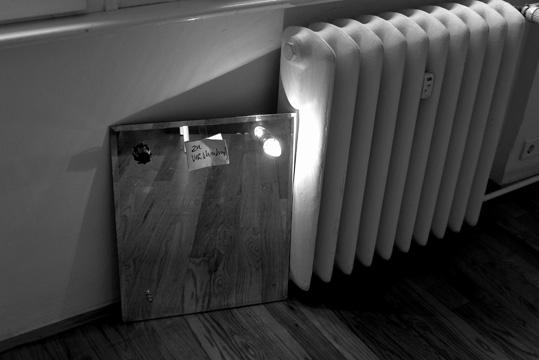USE AND UTILITY
USE AND UTILITY

We all know about Mrs. Cleaning Lady, who, once mistaking the high-priced conglomeration of contemporary fine arts on the gallery floor for rubbish, still makes life difficult for those who work without expansive frames, canvases, or white plinths. And although we only heard about this one time when Mrs. Cleaning Lady got carried away by her passion for tidiness - her sheer existence weighs heavily. Our workplace, formerly filled with optimism and confidence, suddenly turns into a modern war zone with battles on many fronts: not only must we wrestle with the stolidness of materials, or the basic laws of physics, but we are forced to adjust our own understanding of art to Mrs. Cleaning Lady's taste, as we feel her eye continuously targeted on what we are doing. And there is no point in ignoring her power. Because eventually, on the night before the exhibition opens, and after everyone else has gone home, there will come the time when Mrs. Cleaning Lady holds court on our efforts: art, or not art.
Well, to be honest, I always thought that Mrs. Cleaning Lady was just a myth, like the Virgin Mary or the hardworking German. A ghost-like figure that my parents' neighbours told me about as soon as they learnt that I am an artist but not a painter. But unfortunately I have to tell you that Mrs. Cleaning Lady does indeed exist. How do I know? A great artwork that I'm friends with recently had the honour of an intimate encounter. Camouflaged as a bathroom mirror, fully equipped with a warmly shining light bulb on the top, and a breathtakingly polished chrome switch on the bottom, it succeeded effortlessly in attracting Mrs. Cleaning Lady's attention. Very well versed in working quickly, it took her only a split second to detect the appropriate place for the little mirror ... the bathroom. Unfortunately Mrs. Cleaning Lady wasn't into the complete range of useful features the little mirror had to offer. Lighting - unnecessary. What to do? Get rid of the plug on the back side!
At this point the little mirror seriously started to regret this night-time rendezvous, and was aching for the loving hands of its creator. Instead, another mystical creature paid a late visit to the facilities: a curator's young assistant. Well aware of what must have happened, the curator's young assistant placed the little mirror back where the careless artist had left it. (Or rather, where she thought the careless artist had left it.) What a philistine! Not only had he put the little mirror at the mercy of Mrs. Cleaning Lady by not hanging the not-supposed-to-be-hanging-on-the-wall piece on the wall. On top of it, the careless artist had left a jokey note on the little mirror's face reading "To be given away". The curator's young assistant was enraged about the careless artist's lack of gravity and his attempt to fool her. For she knew (like all good curator's young assistants do) that art is not to give away, it is for sale. Statements - unnecessary. What to do? Get rid of the note on the front side!
One whole day the little mirror had to hold out, left on the sidelines, watching the others being dolled up and prepared for their big night out. Nobody contacted the careless artist. After all, the little mirror's fate was solely his fault. The careless artist shouldn't have left the little mirror in a situation where use and utility are easily confused: in an art exhibition.